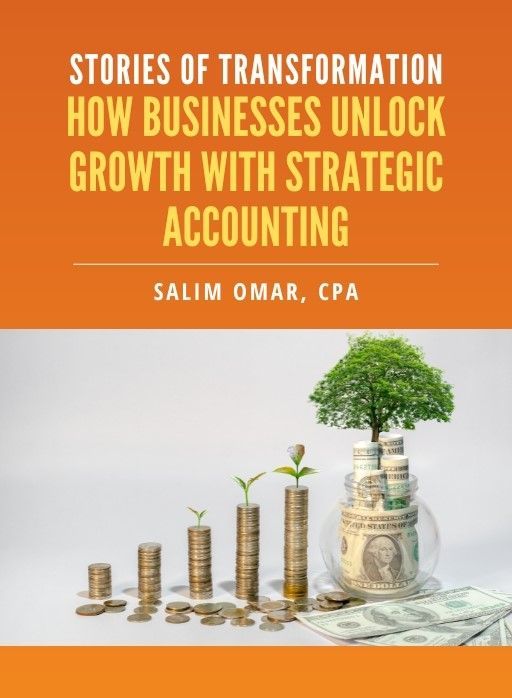Finance Wellness for Operators: Routines and Boundaries That Survive Peak Season
Peak season—whether it’s Q4 for retailers, end-of-year for service providers, or budget season for internal finance teams—can push even the sharpest operators to the edge. Sales spikes, last-minute requests, and non-stop decisions pile up quickly. In the midst of that storm, financial clarity is often sacrificed for speed.
But here’s the paradox: the faster things move, the more costly poor decisions become. Burnout, skipped reviews, or sloppy approvals don’t just slow you down—they directly threaten profitability.
The antidote?
Finance wellness. It’s about establishing routines and boundaries that safeguard decision quality without hindering momentum. Simple rituals like time-blocked reviews, clear handoffs, and smart alerts can help you survive peak season and finish strong.
Why Finance Wellness Matters During Peak Season
Operators and finance leaders are judged on how they handle crunch time. During peak periods:
- Transaction volume spikes. More orders, more payouts, more reconciliations.
- Decision fatigue sets in. Hundreds of choices a day drain focus.
- Risk exposure climbs. Sloppy approvals or late reconciliations can mean fraud, errors, or compliance issues.
- Personal burnout looms. Long hours without clear boundaries erode judgment.
In short, peak season magnifies small cracks into big problems. Finance wellness is about proactive defense—putting structure around how you work so your decision-making stays sharp.
Practice #1: Time-Blocked Reviews
When the pace picks up, reviews are often rushed or skipped entirely. That’s how mistakes sneak in. The fix: create non-negotiable time blocks for financial checkpoints.
- Daily cash review: A 15-minute look at cash balances, incoming payments, and urgent outflows.
- Weekly financial health scan: High-level review of expenses, payables, receivables, and variances against budget.
- End-of-day reconciliations. Spot errors while they’re still small—before they snowball into costly fixes.
Time-blocking ensures financial visibility doesn’t depend on willpower. It becomes routine, just like brushing your teeth.
Practice #2: Clear Handoffs
During peak season, multiple people handle the same data—sales teams record invoices, operations log expenses, and managers approve payments. Without clear handoffs, bottlenecks form and accountability blurs.
Define handoffs like you would a relay race:
- Who prepares the data?
- Who checks it?
- Who approves it?
- What’s the timeline?
When everyone knows their role, approvals move faster, and decisions don’t bottleneck with a single overworked manager.
Practice #3: Smart Alerts
Operators don’t have time to chase every number manually. That’s where alerts come in—automated nudges that highlight what really matters.
Examples:
- Cash balance drops below a set threshold.
- A large expense post without matching approval.
- Payment deadlines are coming due.
The key is to
limit alerts to high-signal items. Too many pings = noise. A few precise ones = clarity.
Boundary #1: Guard Decision Energy
Not all approvals or financial choices are created equal. Some can be delegated, others automated, while a handful require your sharpest attention.
- Delegate routine approvals. Train trusted team members to handle smaller items.
- Automate the repeatable. Use tools for recurring invoices or payroll.
- Protect your peak hours. Block mornings (or your personal high-focus time) for critical reviews.
Boundaries like this preserve your limited decision-making energy for the calls that really shape outcomes.
Boundary #2: Set “Stop Times”
Peak season often blurs into late nights. But unchecked hours destroy judgment. Set hard stop times for finance work.
Why? Because the risk of error skyrockets when you’re exhausted. That one rushed approval at 11 p.m. could undo a week of profit. Protect the system by protecting yourself.
Boundary #3: Close the Loop Weekly
Every week, close the loop with a finance wellness huddle:
- What’s working?
- Where are we overloaded?
- Any signals we’re missing?
This short meeting prevents drift. It keeps financial wellness a shared responsibility, not just a personal burden.
The Payoff of Finance Wellness
When routines and boundaries hold, three things happen:
- Speed stays intact. Reviews happen faster because they’re structured.
- Decisions improve. Operators act with data, not gut alone.
- Stress drops. Everyone understands the system, so the operator isn’t the bottleneck.
The result? A peak season that drives growth—without draining your team or jeopardizing your credibility.
How Straight Talk CPAs Supports Operators
in Crunch Time
At Straight Talk CPAs, we know peak season chaos firsthand. We’ve helped operators across industries—retail, logistics, manufacturing, services—install finance routines that stick.
Our services include:
- Monthly reconciliations that keep data fresh.
- Real-time dashboards for quick decision-making.
- CPA-reviewed statements for lender or board reporting.
- Cleanup support when backlogs threaten to snowball.
Think of us as your
financial wellness partner. While you drive growth, we build the guardrails that protect clarity and speed.
Final Word: Structure Beats Stress
Getting burned out shouldn't be the definition of a Peak season. Just a few simple routines and clear boundaries can keep your decisions sharp—and your stress levels in check.
Finance wellness isn’t about slowing down—it’s about ensuring every decision counts when the stakes are highest.
Straight Talk CPAs is here to help you set up those guardrails and also assist you to make sure your books—and your judgment—stay sharp all season long.
Free eBook:
Stories of Transformation


Salim is a straight-talking CPA with 30+ years of entrepreneurial and accounting experience. His professional background includes experience as a former Chief Financial Officer and, for the last twenty-five years, as a serial 7-Figure entrepreneur.





